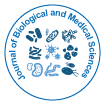Our Group organises 3000+ Global Conferenceseries Events every year across USA, Europe & Asia with support from 1000 more scientific Societies and Publishes 700+ Open Access Journals which contains over 50000 eminent personalities, reputed scientists as editorial board members.
Open Access Journals gaining more Readers and Citations
700 Journals and 15,000,000 Readers Each Journal is getting 25,000+ Readers
Useful Links
Share This Page
Agnieszka Anna Nowak

Agnieszka Anna Nowak
Assistant professor,
University of Silesia in Katowice
Poland
Biography
Since 2008 Agnieszka Nowak is researcher and didactic worker at the Department of Biochemistry, Faculty of Biology and Environmental Protection at University of Silesia in Katowice (Poland). She graduated from the same Department with Master of Biology (2007) and Master of Biotechnology (2008). She is the co-author of 9 original papers, 3 review papers and 1 Polish Patent. She was also participated at several international and national conferences. Nowak has taken part in 2 research projects: first was financed by The European Regional Development Fund and second by National Centre of Science. Since 2007 Nowak is the membership of the Polish Biochemical Society and since 2013 she is also the membership of the Polish Society of Microbiologists.
Research Interest
Initially research interests of Agnieszka Nowak were connected with nitrifying bacteria. These microorganisms immobilized on polyurethane sponge were used as a biosensing component in automatic biodetector of water toxicity. The structure, activity as well as stimulatory effect of xenobiotics on oxidative electron transport of these bacteria were studied. After graduation Nowak was also started to study the ability of different species of bacteria to co-metabolic degradation of monochlorophenols. Phenol, sodium benzoate and 4- hydroxybenzoic acid were tested as the additional carbon source (co-substrate). Simultaneously, changes in the cellular fatty acid profiles (FAMEs) of bacteria depending on co-metabolic conditions as well as their adaptive mechanisms to these compounds were also studied. Currently, the bioremediation of 4-chlorophenol contaminated soil by bioaugmentation is also investigated.

 Spanish
Spanish  Chinese
Chinese  Russian
Russian  German
German  French
French  Japanese
Japanese  Portuguese
Portuguese  Hindi
Hindi